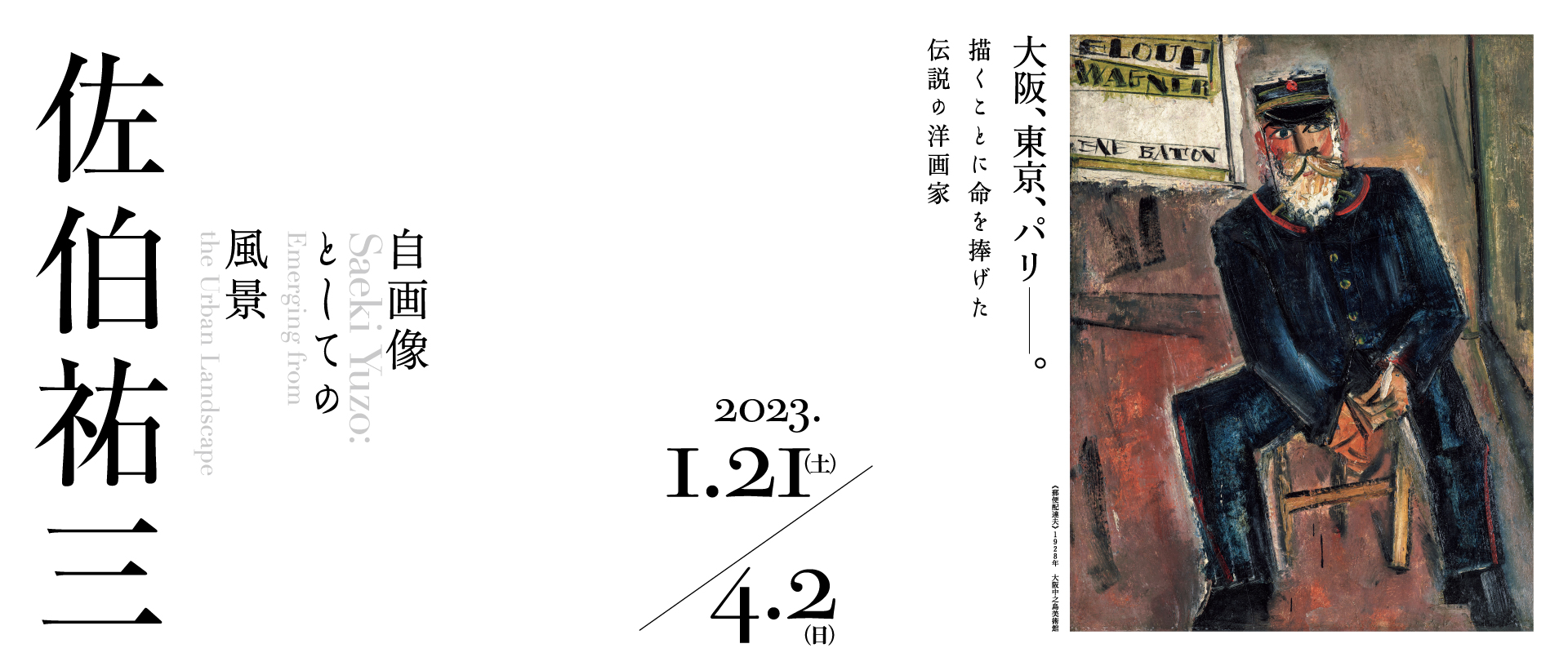
Saeki Yuzo: Emerging from the Urban Landscape
Saturday, January 21, - Sunday, April 2, 2023
*Ticket sales starts from 12/1
- Closed
- Mondays (except March 27)
- Hours
- 10:00 am to 6:00 pm (8:00 pm on Fridays)
Last admission is 30 minutes before closing time.
Exhibition Overview
Saeki Yuzo (1898-1928) was a painter who spent his short life in three cities: Osaka, Tokyo, and Paris. 125 years after his birth in 2023, Saeki's life is enchanted with many dramas and legends. The works he created still radiate a strong luster that cannot help but stir the hearts of those who see them.
Born in Osaka in 1898, Saeki graduated from the Tokyo School of Fine Arts at the age of 25 and left for Paris that same year. When Vlaminck, a Fauvist painter, saw his work, Saeki was angered by the words, "You academic!". During his first two-year stay in Paris, he was influenced by Utrillo, Van Gogh, and others, and his work underwent a major transformation. After a year and a half of temporary return to Japan, he went back to Europe in 1927, when he was 29 years old. Upon his return to Paris, he continued to work furiously, as if possessed by something, but his tuberculosis worsened, mentally suffered, and in the end, he died a year later in a hospital in the suburbs of Paris.
Paris was a special city for Saeki. The massive stone-built streets, the walls of buildings covered with posters, the avenues lined with plane trees, cafes, churches, and even public toilets provided an opportunity for him to create masterpieces. It was also in Paris that he met many painters and their works, which strongly inspired him. Meanwhile, Osaka, the city of his birth, and Tokyo, where he spent his school life and temporary return to Japan, were also important cities by which his art had been developed. This exhibition traces Saeki's footsteps in these three cities and examines the process by which his original art was born.
Highlights
1. More than 100 masterpieces will be here
With the largest collection of Saeki Yuzo's works of the Nakanoshima Museum of Art, Osaka, and many masterpieces from museums and private collectors, this exhibition will provide an opportunity to rediscover Saeki's art.
2. First retrospective exhibition in Tokyo in 18 years
This will be the artist's first extensive retrospective in Tokyo in 18 years, since the exhibition which was held in 2005 at the Nerima Art Museum.
3. Numerous masterpieces depicting the streets of Paris
Tokyo Station Gallery, located in the Marunouchi Building of Tokyo Station (an Important Cultural Property), which was built in 1914, during the same age as Saeki Yuzo's life, utilizes the structural bricks from that era. It is a truly fitting space to exhibit Saeki's works, which were fascinated by the stone buildings and massive walls of Paris.
Information
- Admission Fees
-
Adults: 1,400 yen
High-school and University students: 1,200 yen
Junior high-school students and younger: Free
· Persons with disability certificate or similar receive a 100 yen discount, and one accompanying helper is admitted free.
· Students must present student ID upon entrance to the museum.
- Ticketing
-
We encourage you to buy the online ticket to prevent crowding.

Same-day tickets on sale at the entrance of Tokyo Station Gallery- *Same-day tickets are available at the museum, but we may be unable to grant admission when the museum is crowded.
- *Customers eligible for free admission and those who received a comp ticket or invite may come directly to the museum (no reservation required).
- *Please purchase a same-day ticket at the museum if you wish to receive a reduction by showing a discount ticket or membership card at the counter. Please note that we may be unable to grant admission when the museum is crowded.
- Organized by
- Tokyo Station Gallery (East Japan Railway Culture Foundation), The Yomiuri Shimbun